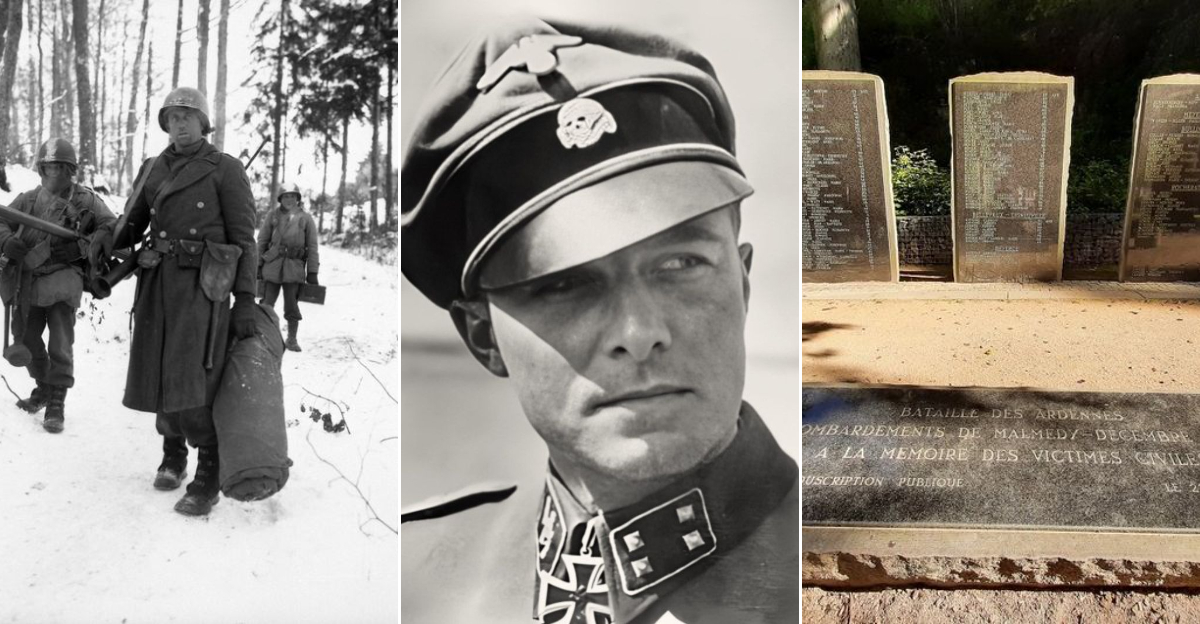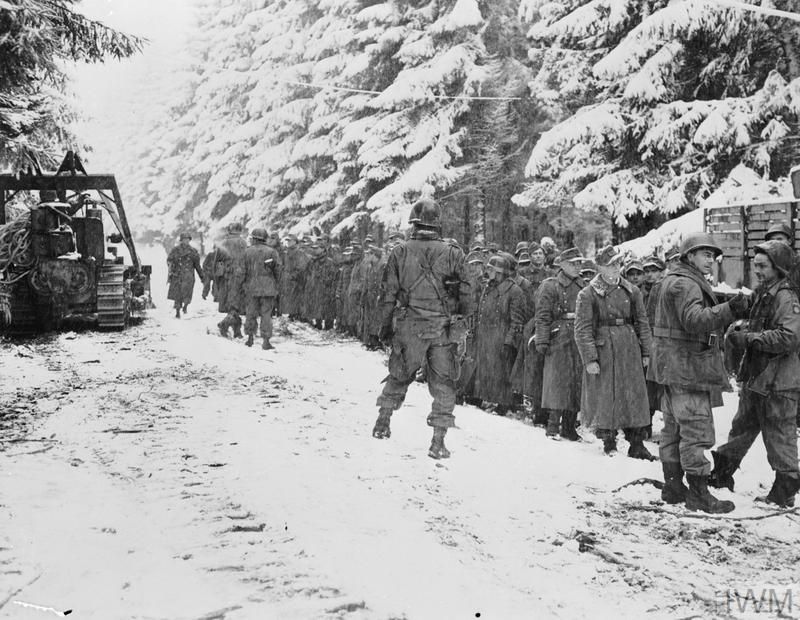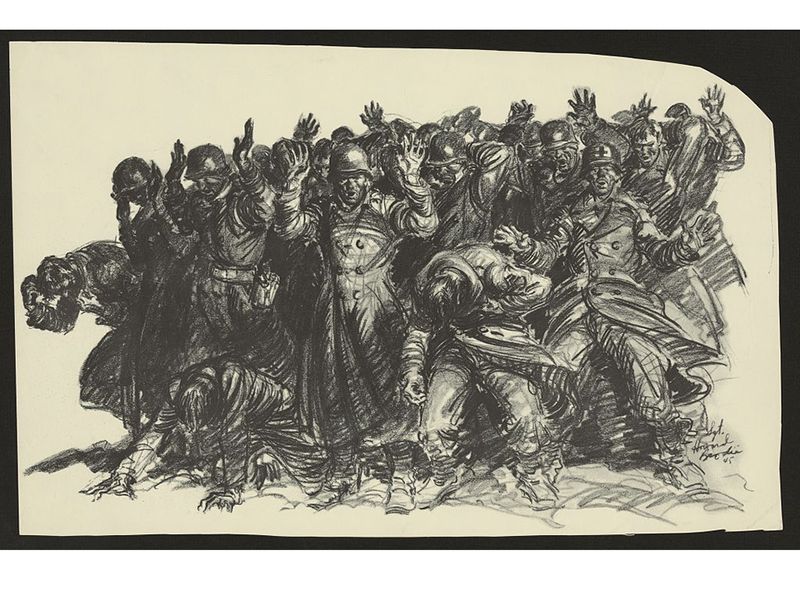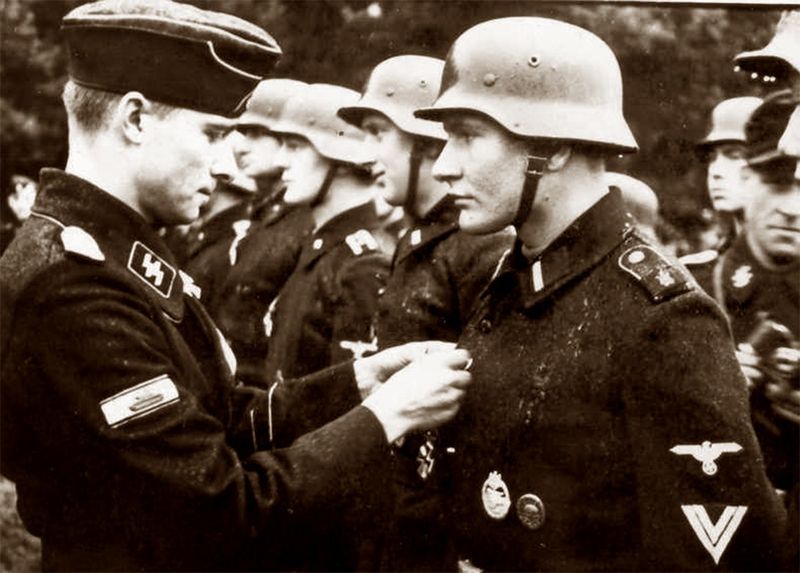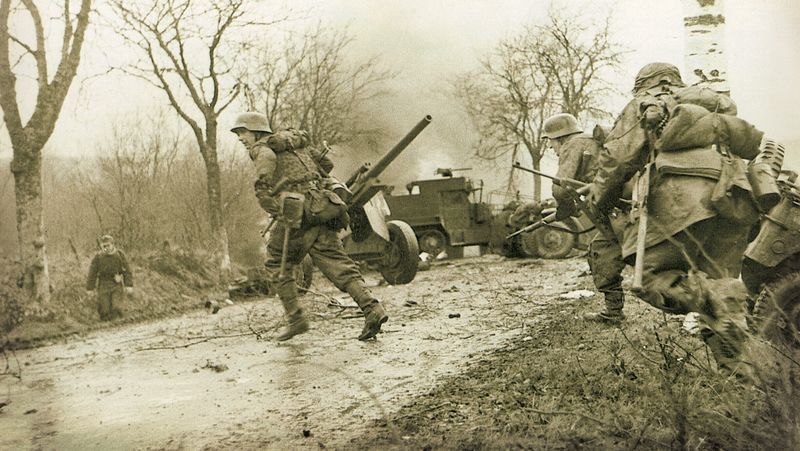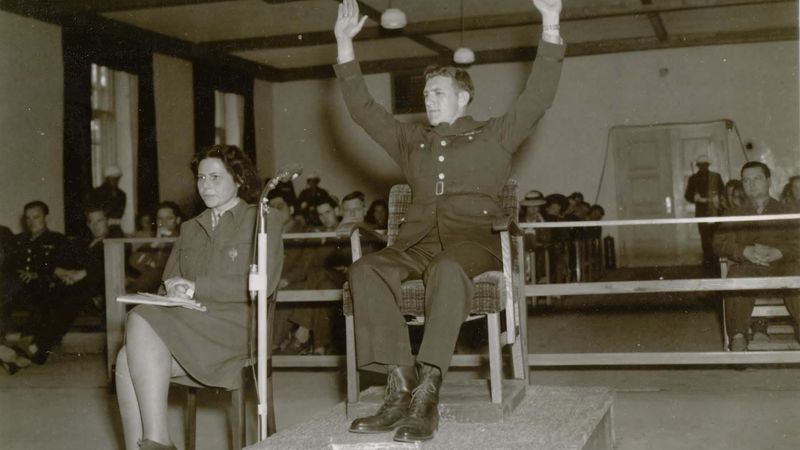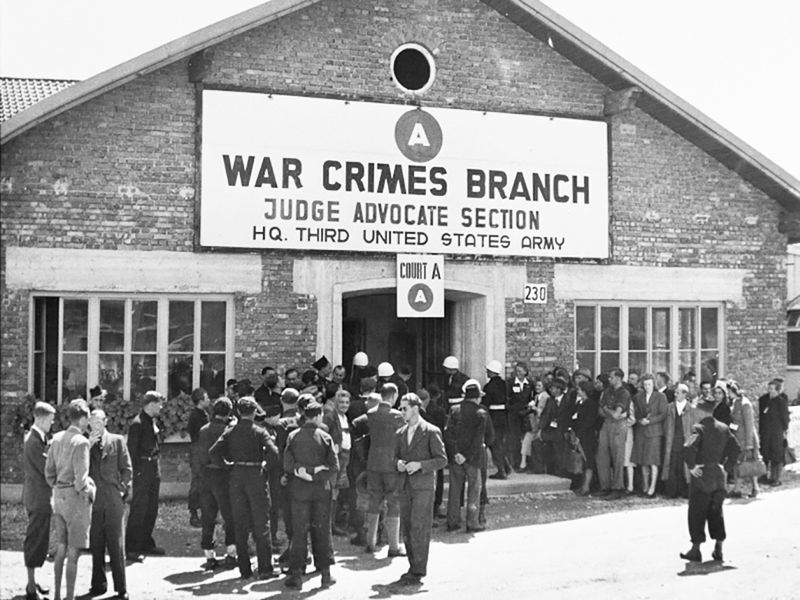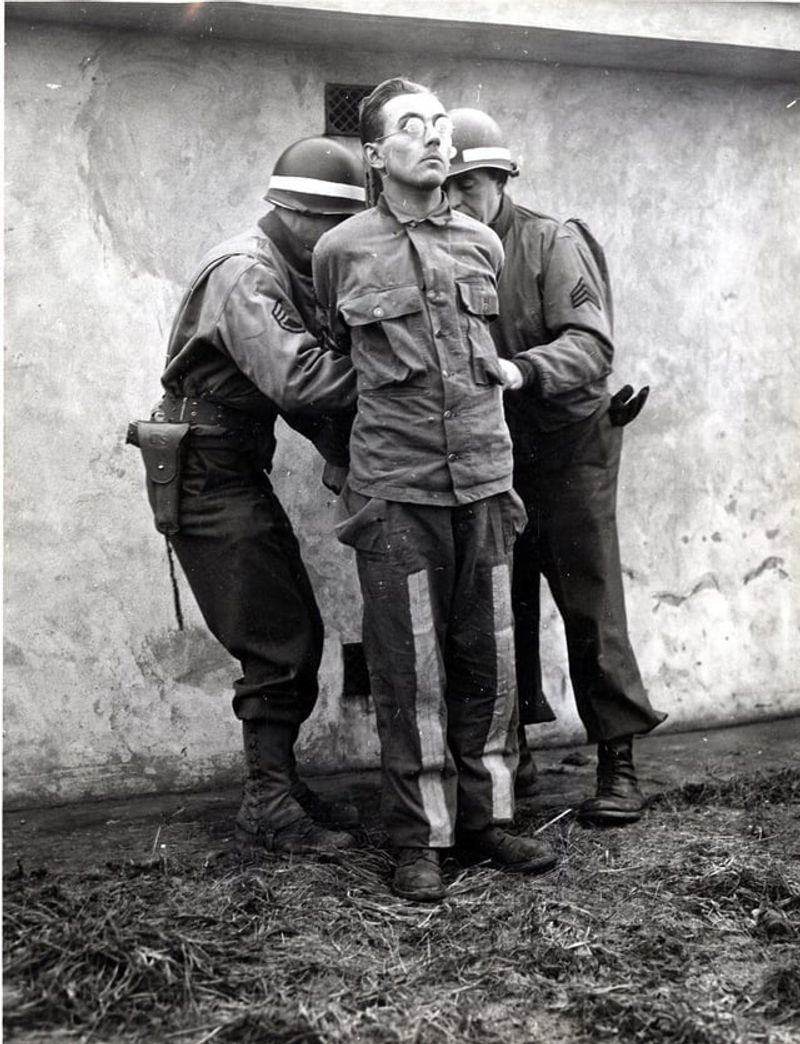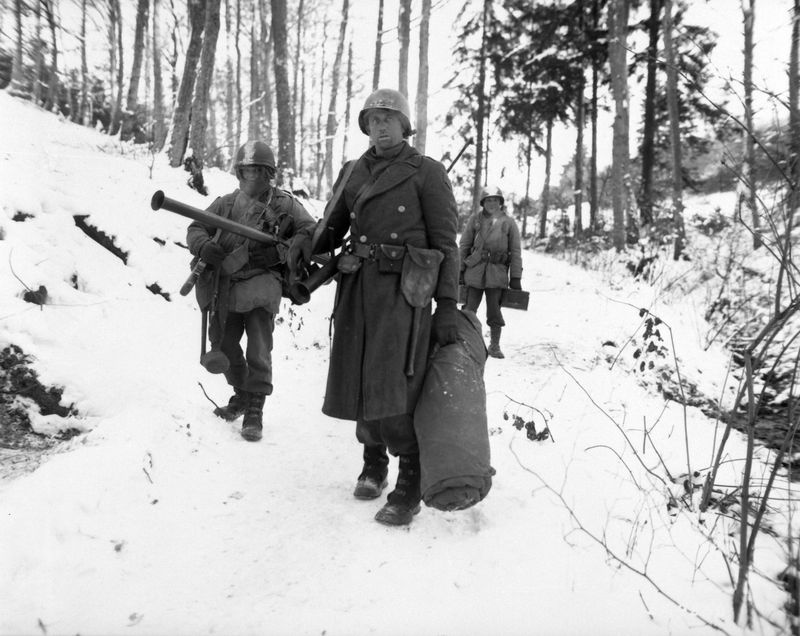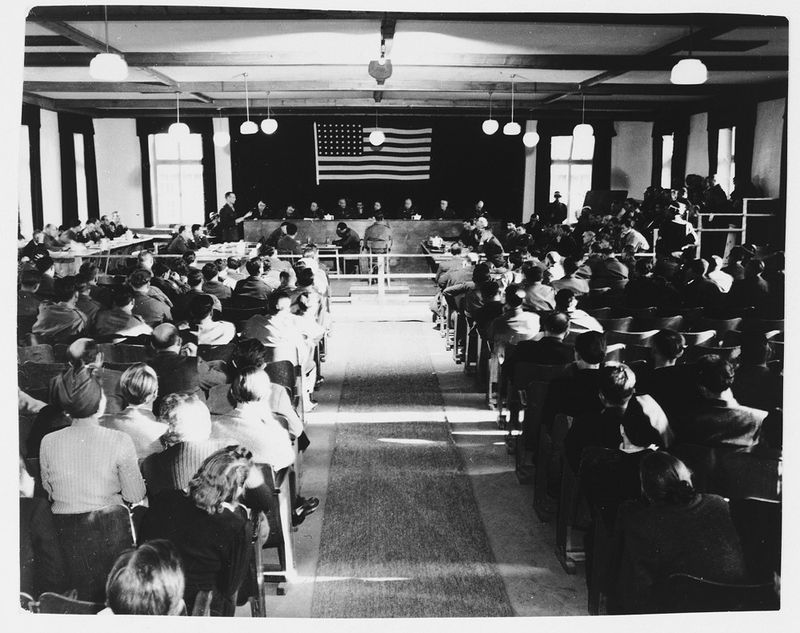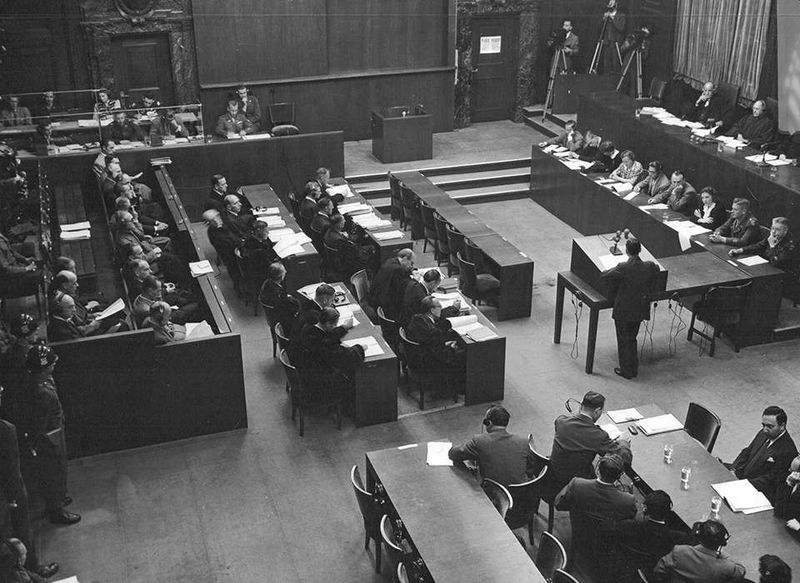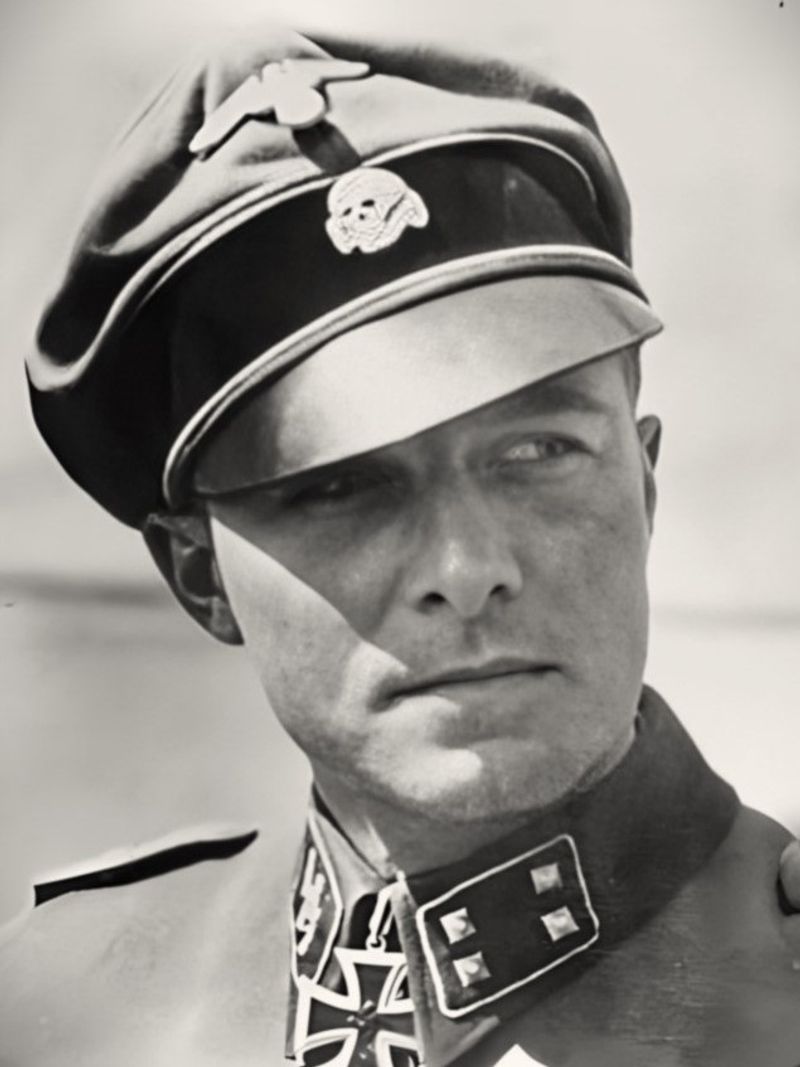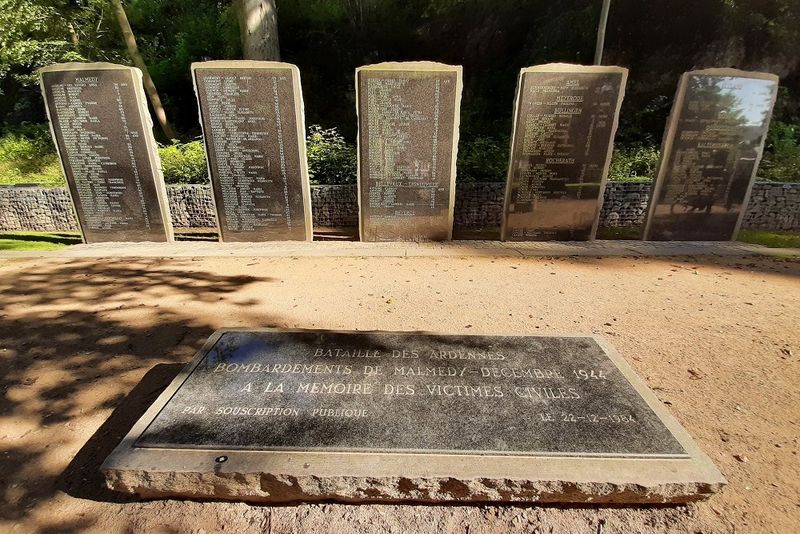In the final months of World War II, as Allied forces pressed toward Germany, Hitler launched a surprise counteroffensive through the Ardennes forest—the Battle of the Bulge. Amid the snow-covered chaos, one of the war’s darkest episodes unfolded: the Malmedy Massacre. Here are 13 chilling facts that reveal the true horror of that day.
1. It Happened Just Days After Hitler’s Surprise Attack
The massacre took place on December 17, 1944, the second day of the Battle of the Bulge. The German offensive had caught Allied troops off guard, resulting in confusion, disarray—and vulnerability. Amidst the freezing conditions, the Germans advanced without the Allies anticipating such a swift and brutal move. The surprise was total. American forces, scattered and unprepared, faced an unexpected challenge in the bitter cold. This event marked one of the initial brutalities in a battle that would become infamous for its harsh conditions and desperate combat.
2. American POWs Were the Victims
More than 80 American soldiers were captured by the German SS and later gunned down in cold blood. They had surrendered peacefully and were unarmed when they were executed. The soldiers, hoping for humane treatment as per the Geneva Convention, were met with ruthless violence instead. This betrayal of the conventions of war shocked the Allied forces. The massacre stood as a grim reminder of the cruelty that can surface during intense conflict, stripping away the thin veneer of civilization.
3. The Killings Were Carried Out by Hitler’s Elite Troops
The perpetrators were part of Kampfgruppe Peiper, a notorious SS unit led by Joachim Peiper, a devoted Nazi and protégé of Heinrich Himmler. These men were fanatically loyal and known for their brutality. The reputation of the SS as Hitler’s most loyal and ruthless troops was further cemented by their actions at Malmedy. Peiper’s presence on the battlefield was a signal of the ferocious intent with which the Germans engaged in their counteroffensive. The massacre was a ruthless demonstration of Nazi brutality.
4. The Victims Were Herded Into a Field Before the Slaughter
After being disarmed, the POWs were assembled in a snowy field near the Baugnez crossroads. Without warning or provocation, machine guns opened fire—followed by pistol shots to those still moving. The tranquility of the snow-covered landscape was shattered by the sound of gunfire. The field, once a serene part of the countryside, became a site of horror and death. Survivors later recounted the grim reality of witnessing comrades being mercilessly cut down. This field is now part of history’s darker chapters.
5. A Few Survived—By Playing Dead
Roughly 43 men survived, either by falling early and feigning death or fleeing into the woods. Many witnessed their comrades being executed at point-blank range. These survivors faced a harrowing test of endurance and psychological resilience, remaining still while surrounded by chaos and death. Their tales of survival became a beacon of hope amidst the tragedy, a reminder of the indomitable human spirit even in the face of overwhelming odds. These men carried the scars of that day forever.
6. German Troops Hunted Survivors
Not satisfied with the initial slaughter, SS troops combed the area for escapees, shooting wounded men and firing into nearby ditches and snowbanks to ensure there were no survivors. The relentless pursuit by the SS underscored their commitment to leaving no loose ends. For the survivors, the nightmare continued as they navigated the snow-covered terrain, evading capture. This pursuit added an additional layer of terror to an already horrific event, amplifying the tragedy of the massacre.
7. News of the Massacre Spread Like Wildfire
Survivors were able to reach Allied lines and report the atrocity within hours. The story quickly spread among American troops, fueling rage and resolve in the bitter fighting to come. The news served as a rallying cry, uniting the soldiers against a brutal enemy. It highlighted the stakes of the conflict and the need to press forward despite the odds. The massacre became a symbol of the barbarity faced, galvanizing the troops into action with renewed determination.
8. It Changed the Rules of Engagement
After Malmedy, reports emerged of Allied troops refusing to take SS prisoners, although official policy never endorsed retaliation. The massacre ignited debates over justice versus vengeance. The moral implications of the event rippled through the ranks, challenging the soldiers’ notions of right and wrong in warfare. The horror of Malmedy forced a reevaluation of conduct during battle, highlighting the thin line between humanity and savagery in wartime. These ethical dilemmas lingered long after the guns fell silent.
9. The Malmedy Massacre Wasn’t an Isolated Case
As Peiper’s unit advanced, they left a trail of civilian and POW deaths across Belgium. Similar atrocities occurred in Stavelot, Wereth, and other towns, though Malmedy remains the most infamous. The pattern of brutality underscored the ruthless strategy employed by the German forces during their advance. Each location added another layer of horror to the already tragic narrative of the Battle of the Bulge. Malmedy’s infamy, however, ensured it became the most enduring symbol of this brutality.
10. A War Crimes Trial Followed the War
In 1946, the Malmedy massacre trial was held at Dachau. Dozens of SS soldiers, including Peiper, were tried. 43 were sentenced to death, though none were ultimately executed. The trial was a pivotal moment in post-war justice, attempting to hold accountable those responsible for the horrors of war. The proceedings were fraught with tension, as the world watched the unfolding drama. The trial’s outcome, with its mixture of justice served and sentences commuted, left a complex legacy.
11. The Trial Itself Was Controversial
Defense attorneys argued that confessions were extracted under duress, including physical abuse. Public opinion in both Germany and the U.S. was divided, and sentences were later reduced. Questions about the fairness of the trial procedures clouded the outcomes, casting a shadow over the quest for justice. The controversy surrounding the handling of the trial reflected broader tensions in post-war reconciliation and accountability. These debates remain a poignant reminder of the challenges in administering justice after such immense conflict.
12. Joachim Peiper Was Released—Then Killed
Peiper was released in 1956 and lived under a false name in France. In 1976, he was assassinated, likely by anti-fascist activists, who set his home ablaze and shot at him as he tried to escape. Peiper’s post-war life was marked by constant threat and a quest for anonymity. His eventual death was as violent as his wartime actions, closing the chapter on a life defined by brutality and conflict. This end, both ironic and tragic, highlighted the lingering ghosts of the war.
13. A Memorial Still Stands at the Site
Today, a granite monument stands at the Baugnez crossroads, listing the names of the murdered. It’s a chilling reminder of the war’s brutal cost—and the atrocities that must never be forgotten. The memorial serves as a place of reflection, honoring those who lost their lives in such a senseless act. It represents a commitment to remembering the past to prevent future horrors. Visitors to the site are offered a sobering glimpse into history and a chance to pay respects.
